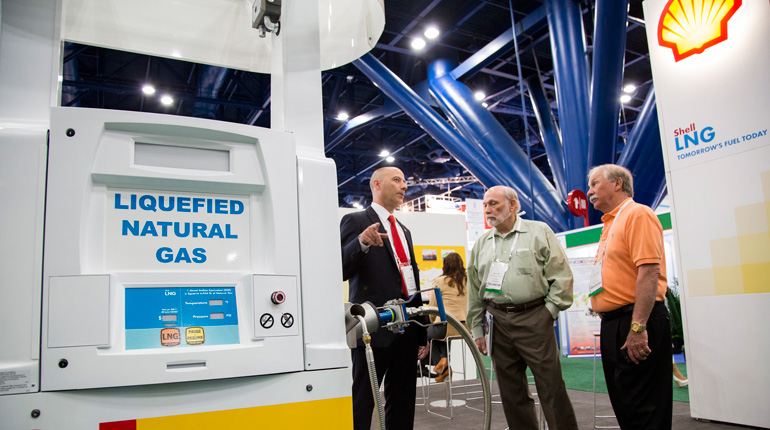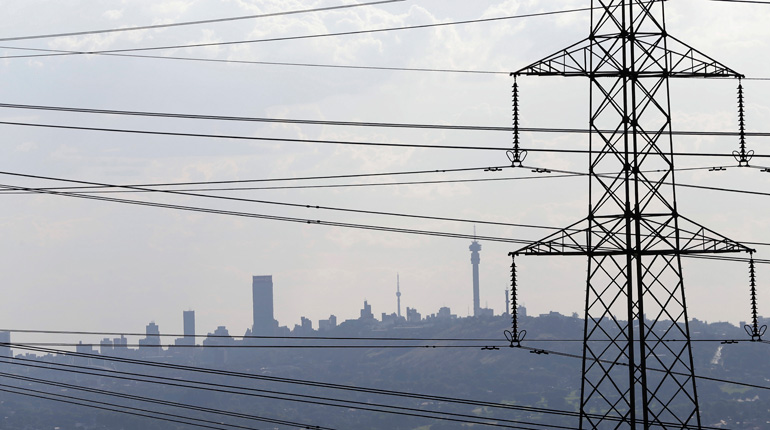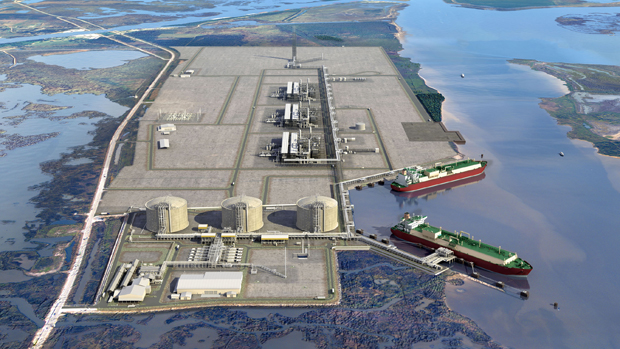Gas in transport will survive low oil prices
 Qatargas and Shell recently announced they would push ahead with ambitious plans to develop gas for transport in the Middle East. (Shell)
Qatargas and Shell recently announced they would push ahead with ambitious plans to develop gas for transport in the Middle East. (Shell)
The widespread use of gas as a transport fuel has always been more of a wish than a promise. The recent recovery in oil prices may help to revive the initiative, but infrastructure limitations mean it will be a slow rollout.
Despite the 60% drop in oil and gas prices since mid-2014, Qatargas and Shell recently announced they would push ahead with ambitious plans to develop gas for transport in the Middle East. The owners of the Qatargas 4 LNG facility announced a memorandum of understanding in April to explore the use of LNG as a marine fuel with the United Arab Shipping Co. (UASC) within the Middle East. UASC said that, within a few months, it will have taken delivery of 17 container vessels, which can be quickly and cheaply retrofitted to run on LNG once the infrastructure is ready globally. Qatargas and Shell signed a similar agreement in February with Maersk for the possible use of LNG as ship fuel. The Danish shipping giant sees this as an opportunity to reduce both sulphur emissions and the transport sector’s carbon footprint.
The EU is also pushing ahead with plans to develop alternative fuels infrastructure, part of which will involve gas and LNG. Transport accounts for around one-third of European primary energy demand, and all but 5% of that is supplied by oil.
Competing with a low oil price
While oil prices were above $100 per barrel, Scandinavian shipping companies were early adopters of LNG as an alternative to diesel fuel to meet IMO Marpol Annex VI rules. These set a 0.1% sulphur limit for marine fuels in emissions control areas from 1 January 2015, which can either be met by using ultra-low-sulphur fuels or by putting emissions scrubbers on board vessels. LNG produces lower emissions compared with conventional transport fuels, including 20-25% less carbon dioxide, a 50-80% cut in carbon monoxide and 25-60% less nitrogen oxide.
The collapse in oil prices – which fell below $30/bbl in January 2016 – took the wind out of the sails of the gas-in-transport initiative. Although LNG prices fell with oil, to around $4-5/MMBtu, the price gap between the two fuels has narrowed, reducing the incentive to switch from petroleum-based fuels such as diesel and heavy fuel oil to gaseous fuels such as LNG and CNG.
This led to predictions that low oil prices would kill the use of gas in transport. The recent recovery of Brent crude oil prices to close to $50/bbl has reopened the prospect that the initiative will gain momentum. Gasoil prices for May delivery in Northwest Europe are equivalent to around $53/bbl, which equates to $9.50/MMBtu based on diesel equivalence of 5.6. Gas prices in Europe are around $4/MMBtu, which should in theory represent a healthy saving for shippers with vessels that can run off LNG rather than diesel.
In reality LNG’s price advantage is reduced by the complex supply chain logistics involved in moving liquefied gas onto a ship or truck. When natural gas is supplied from a trading hub to a small-scale LNG plant and on to a bunkering location or LNG filling station, the price must cover the cost of liquefaction, the tolling fee, storage costs, and the combined freight costs to move the gas from the hub to the final end-use location. When LNG is imported at a terminal with bunkering facilities, terminal and break-bulk costs will also typically be added to the buyer’s bill. Additional costs also include moving the LNG from the terminal to the final bunkering location or to the truck-loading location. Because the supply chain in many locations outside the Amsterdam-Rotterdam-Antwerp hub is still relatively inefficient, the cost of transporting LNG to individual bunkering locations via truck or bunkering barge may be significant.
Recent changes in pricing structures may benefit the use of LNG in transport. Around 70% of LNG traded around the world is linked to oil prices, typically on a delivered ex-ship basis through a slope that sets LNG at a discount to the oil price and a coefficient representing the cost of transporting it to the destination. More recently, however, growing volumes of LNG from the United States have been priced free-on-board, based on the Henry Hub price plus a liquefaction fee. These hub-linked volumes could act as a cap on LNG prices in Europe even if oil prices were to rise further, potentially widening the saving relative to diesel for a shipping or trucking company using LNG.
Infrastructure remains the major stumbling block to the uptake of LNG as a transport fuel. The EU has supported development of a gas-fuelling infrastructure through its Clean Power for Transport Strategy, with a directive on the deployment of alternative fuels infrastructure as its main instrument. The two-pronged approach proposes making LNG available for marine vessels in all 130 marine and inland ports within the EU, alongside the Ten-T network linked to the land transport network. For long-haul freight, the EU set up the ‘Blue Corridors’ scheme to create LNG filling stations on a west-east and north-south axis for use by large high-horsepower trucks.
However, the timeframes for delivering the infrastructure have been extended. Under the EU directive, maritime ports only have to put LNG refuelling in place by 2025 and inland ports by 2030.


